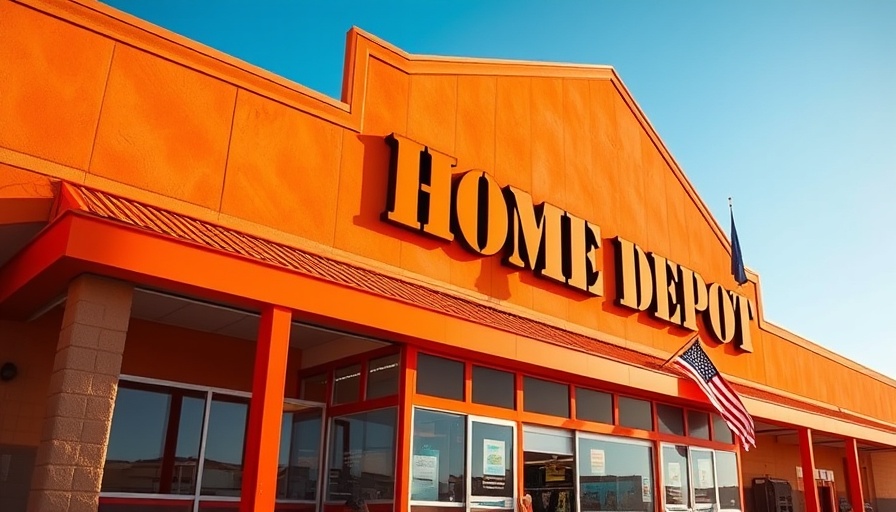
Home Depot’s Bold Stand Against Tariff-Driven Price Hikes
In an era where most retailers are grappling with the pressure of rising costs due to tariffs, Home Depot is making headlines for its decision to maintain stable pricing. Amid the uncertainties of President Trump’s trade war, the home goods giant has chosen a different path, signaling a commitment to its customer base while navigating economic challenges.
On May 20, Richard McPhail, Home Depot’s CFO, clarified their pricing strategy during an appearance on CNBC. He stated, “Because of our scale, the great partnerships we have with our suppliers and productivity that we continue to drive in our business, we intend to generally maintain our current pricing levels across our portfolio.” This is a strikingly different approach compared to competitors like Walmart, which have opted to implement price increases in anticipation of tighter profit margins.
What’s notable is that over half of Home Depot’s products are made in the U.S., highlighting the importance of domestic manufacturing in managing operational costs. This strategy is not just a reactionary measure; it showcases Home Depot’s intention to strengthen its supply chain efficiency. McPhail further asserted that by 2026, no single country outside the U.S. will account for more than 10% of the company’s products.
Current Market Dynamics: A Chance for Growth
While home improvement spending has seen a dip due to escalating interest and mortgage rates, Home Depot is keen on exploring opportunities within smaller projects. CEO Ted Decker noted that homeowners are increasingly engaging in smaller tasks like painting and yard work, rather than major renovations. This shift could allow Home Depot to capture a broader market share by catering to the DIY enthusiasts and those with limited budgets seeking to enhance their living spaces.
“Our customer is healthy, and we think that’s what has supported their level of engagement in home improvement,” Decker explained. This statement provides an encouraging outlook for Home Depot, emphasizing the potential for sales growth despite economic headwinds.
Future Insights: Will Home Depot Maintain Its Course?
As the trade environment evolves—evidenced by the recent reduction of tariffs on China from 125% to 30% for a 90-day period—Home Depot finds itself at a strategic advantage during its peak sales season in spring. This new accord could potentially soften the pressure on other retailers, ultimately benefiting Home Depot’s approach to pricing.
Yet, the question remains: Can Home Depot sustain this stance amidst fluctuating economic conditions? As industry dynamics shift, companies must be agile. For homeowners, this situation is particularly salient; with tariffs influencing the cost of materials and products, customers will be keeping a close eye on pricing trends as the season progresses.
Community and Economic Impact of Pricing Decisions
The ripple effect of Home Depot’s pricing decisions extends beyond just products on shelves. By refusing to hike prices, Home Depot is prioritizing the financial well-being of customers, particularly in a time when many households are feeling the crunch from rising costs elsewhere. For many DIY enthusiasts and homeowners, equitable pricing can mean the difference between undertaking a project or putting it off until a more favorable financial period.
This decision embodies a larger trend in the retail landscape to balance profitability with consumer satisfaction. Home Depot’s commitment to keeping prices steady can foster loyalty and trust among its customer base, which can translate into long-term success as the housing market stabilizes.
Conclusion: The DIY Community Rallies Around Home Depot
For homeowners and DIY enthusiasts, having a retailer that stands firm against price increases offers reassurance in these uncertain times. Home Depot is providing resources and materials that empower individuals to tackle home repairs, renovations, and maintenance without breaking the bank. As they focus on affordability, consumers are encouraged to take on projects that enhance their home environments.
Considering the impact of Home Depot’s pricing strategy on their business model and customer relationships, it’s crucial for homeowners and DIY aficionados to keep abreast of these developments. As interest rates remain unpredictable and consumer costs rise, understanding how to navigate home improvement choices can directly affect your wallet. Stay informed and ready to embark on your next home project with Home Depot, a company prioritizing accessibility in the DIY space.
 Add Row
Add Row  Add
Add 



 Add Row
Add Row  Add
Add 


Write A Comment